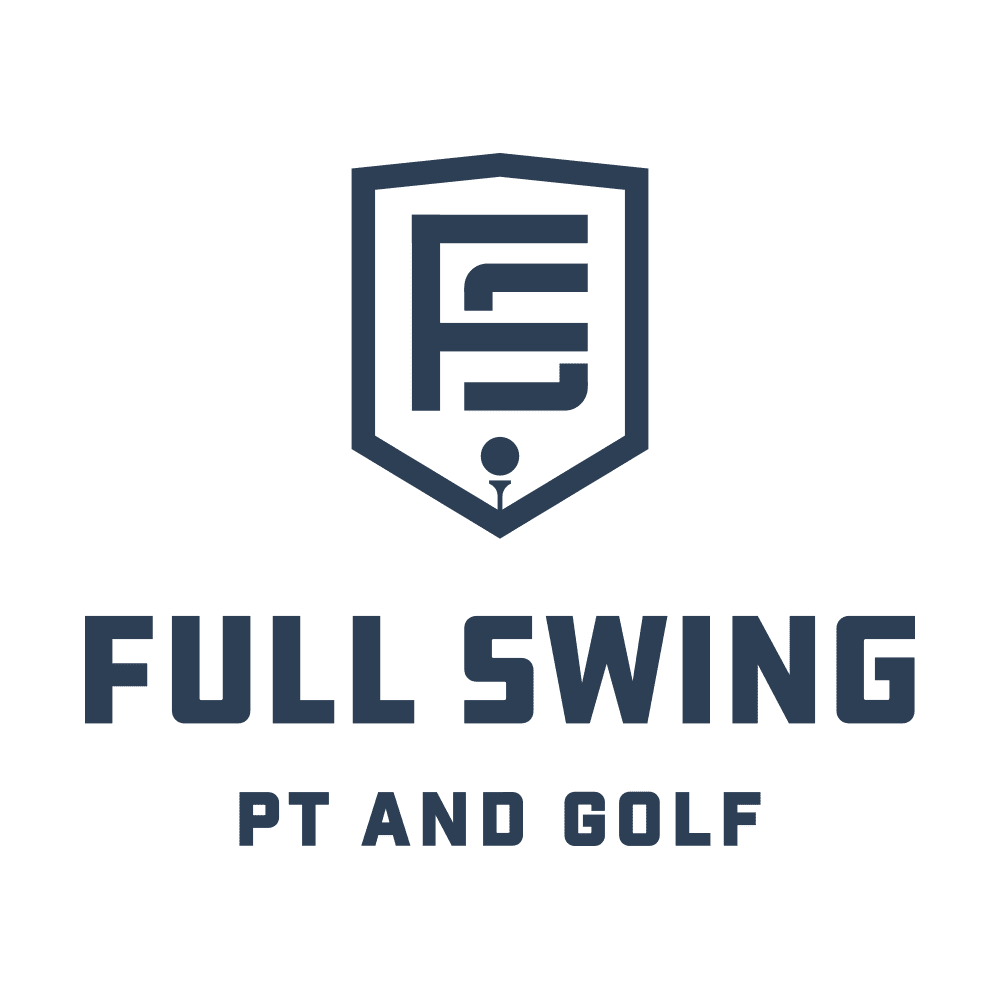Quick Facts About Golf Injuries
Unlike other popular sports, many people are able to play golf for most of their lifetime. But the golf swing is an unnatural movement that places tremendous stress your body, even when performed properly (see Woods, Tiger). The rotational aspect of the golf swing increases injury risk for both professionals and weekend warriors. Many of these injuries can be prevented. Trying to play through these injuries can lead to unnecessary pain that lingers, leading to higher scores and pain that can interfere with golf and everyday activities.
There are many factors that increase your risk of golf injuries, including:
- Overuse and over-practice
- Poor swing mechanics
- Trying to hit the ball too hard
- Poor warmup
- Poor posture
- Tightness/spasm in back and hip muscles
- Weak core muscles
- Weak hip muscles
- Old injuries that haven’t resolved
(Now that I’m writing this, I have some things to work on myself before my next round.)
To correct your swing mechanics, see a PGA teaching professional.
For golf injury causes and tips for pain relief, keep reading.
1. Back Pain
Back pain is experienced by over 80% of people at some point in their lifetime, and golfers are no exception.
Back pain causes shorter tee shots and can make short game shots and putting more difficult and painful. You are not alone in experiencing back pain, and it can get better!
Your pain is most likely the result of tight or spasming low back and hip muscles, weak core muscles, and a poor warmup.
Tips for Back Pain Relief:
- If your pain is sharp or shooting, see your physician before playing golf
- Use hot packs before and after rounds to relax tight muscles
- Stretch your low back twice a day. Start by lying on your right side in the middle of your bed. Position your legs so that your left leg is relaxed and resting on the bed, with your right leg flat on the bed behind it. Slowly rotate your left shoulder backwards until you feel a stretch in your low back. Maintain a position that stretches your back and doesn’t cause pain for 30 seconds. Repeat the same stretch on your other side.
- To warm-up before a round or hitting balls on the range, walk at a good pace for 5 minutes to get your heart pumping and muscles loose, climb stairs or stand up/sit down from a chair 5 times to activate your hip and back muscles needed for stability in your swing, and make 10 slow swings using a 6-iron, starting with a half swing, and finishing on a full swing, making sure to feel your trunk getting looser with each swing.
2. Elbow Pain
“Golfer’s elbow”, or medial epicondylitis, is a close relative of “tennis elbow”, or lateral epicondylitis, and both are very common injuries for golfers to experience.
These injuries are both forms of tendinitis, or irritated and inflamed forearm muscle tendons, that are usually caused by excessive wrist/hand movement in the swing, overuse, and tight forearm muscles.
Elbow pain causes shorter tee shots and can lead to more exaggerated hooks or slices.
Tips for Elbow Pain Relief:
- If your pain is sharp or shooting, see your physician before playing golf
- Use hot packs before your rounds to relax tight muscles; use ice after rounds to decrease new inflammation
- Stretch your forearms (both) twice a day. Start by holding your right arm out straight in front of you with your palm pointing up. With your left hand, grab your right hand and slowly pull the hand down so that you feel a stretch on the palm side of your forearm. Maintain a position that stretches but doesn’t hurt for 30 seconds. Then stretch the back of your forearm by holding your arm out straight with your palm pointing down. With your left hand, pull the right hand down into a stretch, and hold for 30 seconds. Perform 2 stretches for each side of the forearm, and then stretch the other side.
- To warm-up before a round or hitting balls on the range, hold both of your arms out straight in front of you, roll your wrists in clockwise circles 10 times, and then counter clockwise circles 10 times without letting your arms or elbows move, then make 10 slow swings using a 6-iron, starting with a half swing, and finishing on a full swing, making sure to feel your forearms getting looser with each swing.
3. Knee Pain
More than 1/3 of people will experience knee pain this year, so you are not alone.
Knee pain can be caused by arthritis, damage to ligaments, cartilage, or meniscus, or from a simple muscle imbalance (most commonly tight hamstrings and weak quads).
Knee pain can make all aspects of a round of golf difficult: getting in and out of the cart, warming up before the round, walking to your ball, walking on hills, and even simply standing in a good posture over the ball.
Your pain causes shorter tee shots and lots of frustration.
Tips for Knee Pain Relief:
- If your pain is sharp or shooting, see your physician before playing golf
- Use hot packs before your rounds to relax tight muscles; use ice after rounds to decrease new inflammation
- Stretch your hamstrings twice a day. Start by sitting up tall in a firm chair. Prop your heel on an ottoman or other object to support your leg so your knee is straight and your foot is level with your hip, and your other leg relaxed with the foot flat. Slowly lean forward while keeping your back straight until you feel a stretch in the back of your leg. Maintain a position that stretches but doesn’t hurt for 30 seconds. Repeat the stretch twice on each leg.
- To warm-up before a round or hitting balls on the range, walk at a good pace for 5 minutes to get your heart pumping and muscles loose, climb stairs or stand up/sit down from a chair 5 times to activate your hip and knee muscles needed for stability in your swing, and make 10 slow swings using a 6-iron, starting with a half swing, and finishing on a full swing, making sure to feel your knees supporting you with each swing.
4. Shoulder Pain
Shoulder problems are prevalent in all sports that involve overhead motions, including baseball, softball, basketball, volleyball, gymnastics, tennis, football, and golf. Many athletes are limited by shoulder pain on a daily basis.
Shoulder pain can be the result of arthritis, rotator cuff tendinitis or tears, bursitis, labral tears, impingement, chronic poor posture, or even a simple muscle imbalance (most commonly tight pectoral or chest muscles and weak back and rotator cuff muscles).
Shoulder pain causes pain in the backswing, downswing, or both, and leads to shorter tee shots and frustration.
Tips for Shoulder Pain Relief:
- If your pain is sharp or shooting, see your physician before playing golf
- If you can’t raise both of your arms over your head or place both hands behind your head without pain, it is best to avoid playing golf until you have seen your physician or physical therapist
- Use hot packs before your rounds to relax tight muscles; use ice after rounds to decrease new inflammation
- To strengthen your shoulders and improve your posture, perform shoulder shrugs and shoulder blade retractions (squeeze shoulder blades back and down), 10 repetitions each, twice a day, and think about sitting up straight as much as possible. A hunched over posture can cause pain in fully healthy shoulders.
- To warm-up before a round or hitting balls on the range, perform 10 repetitions of your shoulder shrugs and retractions, lift both of your arms over your head with straight elbows 10 times (as if signaling “touchdown”), and make 10 slow swings using a 6-iron, starting with a half swing, and finishing on a full swing, making sure to feel your shoulders slowly loosening up with each swing.
If These Tips Don’t Entirely Fix Your Problem…
See a Physical Therapist
If you’re doubtful, have any other concerns, other medical conditions, feel like something isn’t quite right, or just want to get better right away, see a physical therapist today!
Physical Therapists are specialists in evaluating your entire body and help you to understand what’s really going on. You should expect for your visit with a physical therapist to include at least 30-45 minutes of 1 on 1 direct attention from the PT.
A proper evaluation should include a thorough full body movement assessment, hands-on assessment, a treatment plan, and a home self-treatment program. Your physical therapist will create an exercise and therapy program that is customized just for you, and we will “Teach you to fish” by providing self-treatment techniques for symptom management around the clock.
Visits with your physical therapist should include skilled hands-on treatments to massage tight areas, loosen restricted connective tissue, mobilize tight joints, and teach you self-treatment and corrective exercises for home.
Get PT 1st
Numerous studies have demonstrated and confirmed that physical therapy is the most effective, most conservative, lowest risk, most cost-effective treatment, and the best 1st choice for common golf injuries without side effects.
You DO NOT need a referral from a doctor or a physician to get seen by a physical therapist at my practice.
We can see you now, without waiting weeks for an appointment with a physician to provide a referral or prescription.
Would you like to discuss your best options to end your pain and get back to playing your best? Would you like to have that conversation right now?
Call me today at (407) 222-5038 for a FREE CONSULTATION.
Talk to you soon!


